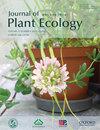Vegetation Restoration Constrained by Nitrogen Availability in Temperate Grasslands in Northern China
IF 3.9
2区 环境科学与生态学
Q2 ECOLOGY
引用次数: 0
Abstract
Grazing exclusion using fencing has been considered an effective means of vegetation restoration in degraded grasslands. Increased plant growth during recovery requires more nitrogen (N), which is a major limiting factor in northern China. It remains unclear whether soil N supply in this region can support long-term vegetation restoration. In this study, a field inventory was conducted in seven temperate grasslands in northern China. At each site, grassland outside of the fencing experienced continuous grazing, whereas that within the fencing was protected. Results showed that grazing exclusion significantly increased aboveground biomass, species richness, and the Shannon–Wiener diversity index by 126.2%, 42.6%, and 18.8%, respectively. Grazing exclusion reduced the concentrations of nitrate and total inorganic N by 51.9% and 21.0%, respectively, suggesting that there may be a mismatch between N supply and plant demand during the growing season. The aboveground biomass, species richness, and Shannon–Wiener diversity index in the restored grasslands were positively correlated with legume dominance within the community. These results indicate that the vegetation restoration in temperate grasslands could be constrained by soil N availability, which may be supplemented through biological N fixation.受氮素有效性约束的北方温带草地植被恢复
在退化的草原上,使用围栏排除放牧被认为是恢复植被的有效手段。恢复期间植物生长的增加需要更多的氮,这是中国北方的一个主要限制因素。目前尚不清楚该地区的土壤氮供应是否能支持长期植被恢复。本研究对中国北方七个温带草原进行了野外调查。在每个地点,围栏外的草地都经历了持续的放牧,而围栏内的草地则受到了保护。结果表明,禁牧显著提高了地上生物量、物种丰富度和Shannon–Wiener多样性指数,分别提高了126.2%、42.6%和18.8%。放牧排除使硝酸盐和总无机氮的浓度分别降低了51.9%和21.0%,这表明生长季节氮供应和植物需求之间可能存在不匹配。恢复草地的地上生物量、物种丰富度和Shannon–Wiener多样性指数与群落内豆科植物的优势度呈正相关。这些结果表明,温带草原的植被恢复可能受到土壤氮有效性的制约,而土壤氮可通过生物固氮来补充。
本文章由计算机程序翻译,如有差异,请以英文原文为准。
求助全文
约1分钟内获得全文
求助全文
来源期刊

Journal of Plant Ecology
生物-植物科学
CiteScore
4.60
自引率
18.50%
发文量
134
审稿时长
3 months
期刊介绍:
Journal of Plant Ecology (JPE) serves as an important medium for ecologists to present research findings and discuss challenging issues in the broad field of plants and their interactions with biotic and abiotic environment. The JPE will cover all aspects of plant ecology, including plant ecophysiology, population ecology, community ecology, ecosystem ecology and landscape ecology as well as conservation ecology, evolutionary ecology, and theoretical ecology.
 求助内容:
求助内容: 应助结果提醒方式:
应助结果提醒方式:


